“Iconic” is a much overused word but when it comes to Tubular Bells, its use is entirely justified. From its cover art to its multi tracked instrumentation, the album embodies the early seventies just as Sergeant Pepper did for the late sixties a few years earlier and Never Mind The Bollocks would do for the mid seventies a couple of years later.
Daniel Holdsworth and Aiden Roberts have adapted Tubular Bells as a piece for two musicians and it is a testament to both their musicianship and the continuing attraction of the music that they perform to sell out audiences all over the world, recently completing a three-week residency at the Edinburgh Fringe Festival.
Multi-Instrumentalists Holdsworth and Roberts have their own equipment set ups on each side of the stage. Both based around keyboards, guitars and effects pedals, Roberts’ is augmented by a bass drum, floor tom and cymbal. A full drum kit is located to the rear of Holdsworth’s gear and at at rear centre stage, a set of tubular bells.
Holdsworth and Roberts take the stage and position themselves behind their equipment. They exchange nods to confirm that they are ready to go and Holdsworth starts that familiar opening piano figure with his left hand, doubling on glockenspiel with his right after a few bars. This is then looped with a tap on a foot pedal, allowing him to build up further layers on top. Roberts provides the bass line, using a guitar and octave pedal. This too is looped so that Roberts can add additional guitar work.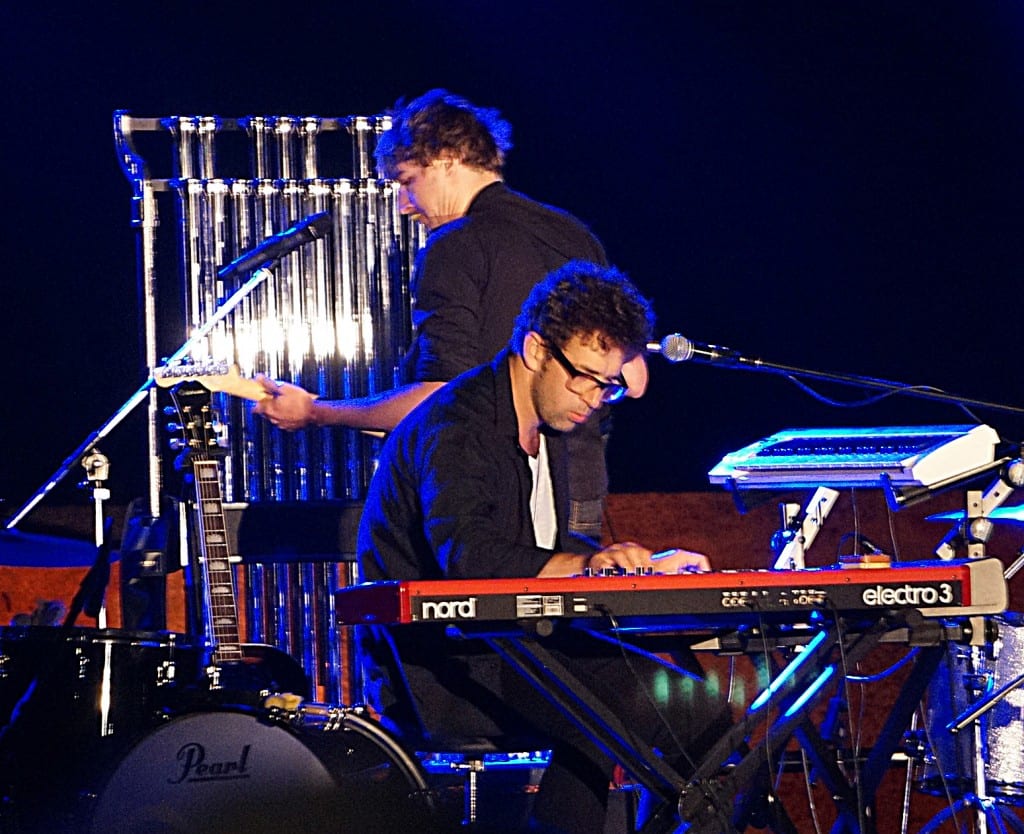
Looping and layering are the key to a successful performance and it is fascinating, and a little nerve wracking, to watch both musicians constantly switching between instruments, adjusting keyboard and pedal settings and switching connecting cables. Some of the changes are really quite frantic and there is a palpable sense of tension and relief from the audience as the changes are made just in the nick of time.
Almost before we know it we are approaching the climax to the first side of the album. Holdsworth sets up the bassline that underpins this section then jokingly sits back to take a breather and a sip from a wine glass as Roberts adds further touches. This respite is short-lived however, as he is soon back behind his keyboards feverishly making adjustments.
Aside from the opening, this is arguably the most well known part of the album. Roberts solemnly announces the entry of each instrument, culminating of course in those tubular bells. It would be amazing if a performance of this complexity was not subject to some sort of technical glitch and tonight there is a problem with the pick up in the Spanish guitar that ends the first part of the piece. Holdsworth immediately acts to overcome this by repositioning one of the vocal mics to amplify the guitar.
The duo take the opportunity to have a brief chat with the audience while setting up for the second part of the show. While a good few of the audience have seen the performance before – “I hope we played a completely different set of mistakes for you this time” Holdsworth jokes – perhaps surprisingly there are a handful who have never heard Tubular Bells before.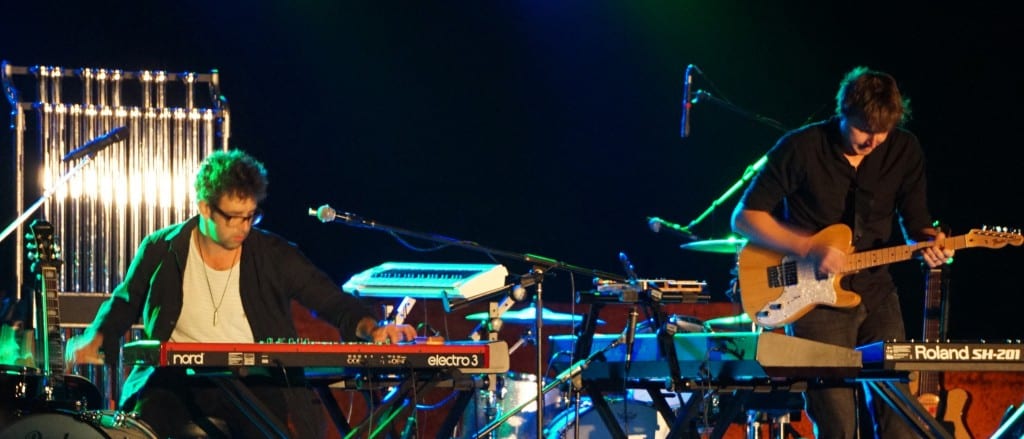
The relaxed opening to the second half gives the pair a brief chance to recover from the rigours of “Side One” but it’s not long before we things heat up again with the Bagpipe Guitars section leading into the Piltdown Man section. Holdsworth rushes to the drum kit and sets up a solid rhythm while Roberts performs the “caveman” vocals and thrashing guitars. No matter how good Roberts and Holdsworth may be, there is only so much they can do with four arms and legs and so a key guitar line is ingeniously replicated on kazoos – and it works! This section is extended into a furious drum battle between the pair before Holdsworth rushes back from the kit, takes a much-needed gulp from a bottle of water, and straps on his guitar for the finale during which he delivers some really fine emotionally-charged soloing. We end on The Sailor’s Hornpipe, giving both musicians a final chance to shine. The Spanish guitar is still playing up but once more some ad hoc ingenuity saves the day.
Roberts and Holdsworth take a bow to a well-deserved ovation. If you like Tubular Bells then you really need to see this show. If you don’t like Tubular Bells but want to see two musicians work their bollocks off to produce something extraordinary then you really need to see this show. Just see the show, you won’t regret it.
I caught up with Aiden and Danny during their Edinburgh run to ask them about how they put the show together and some of the challenges they face in performing it.
Hifi Pig: Hi guys, thanks for taking the time to do this. Can I start by asking you a question that I’m sure you’ve been asked many times: Why Tubular Bells?
Aiden: Why Tubular Bells? We were living near to each other in the Blue Mountains and we’d been friends for many years. We hadn’t really seen each other for maybe two years and I thought: “Why don’t we start hanging out again?” So Danny would come over to my house every week or so and we’d just hang out, start playing guitar, have some drinks and just listen to records. We had Tubular Bells on the record player one night and got really interested in it, having known it as teenagers and we started playing it on our iPods and stuff. I can’t remember when it really started but we got interested in trying to learn how to play it on a couple of instruments. And then we got carried away and thought why don’t we try and turn it into a performance with lots of instruments and try and make it sound as much like the record as we possibly can. And that’s where it began.
Hifi Pig: How long did it take from there to the point where you were ready to play it in front of an audience?
Danny: it was about a year. The initial idea was just us having fun and then we thought maybe we could just play in a café down the street on a couple of guitars but then, as it grew, it was about a year before we thought were we brave enough to book a show and that then gave gave us a timeline to get it into shape. It was really difficult, trying to get each bit right section by section, and then trying to work out how to cross between sections.
Aiden: And there were sacrifices to be made as well. Obviously we can’t play absolutely everything, so it’s: How can we give the impression of all these layers? Sometimes you have to play two things at once on one instrument or try and cross thing over.
Danny: But the show keeps evolving. We’re still changing it, we’re still adding more. We’ve been doing it for six years and we are still adding more and more every time we do it. There was a little thing we added just last night, so it’s an evolving beast.
Hifi Pig: What was that change?
Aiden: Oh, it was a just a tiny little thing. It’s in one of the organ sounds. We decided to play it an octave down and then loop it to make it an octave up as well because on the record there is two doing the same thing. And so that’s another little detail that makes it sound more like the record.
Danny: Sometimes we come up with little problem-solve sections to make a transition easier like: “Oh! I’ve just realised that if I loop the three notes that I play in that section about a minute before they appear again, then I can trigger them just as I have to put my guitar down and get up.” Just tiny things like that that just took a lot of live performance to work out. Every time we do something like that we have to practice it at the next show and if it works you keep it. If it doesn’t, you go back to how you were doing it before. The whole thing is just a patchwork of problem solving and it’s become second nature to a degree. On top of all that we then have to play it so it sounds good; play the notes correctly. It’s really hard! (Laughs)
Aiden: We’ve got some recordings of early performances and that beginning – because we were so stressed in the early days – it sounds so angry and aggressive on what’s meant to be a gentle piano thing.
Danny: It took a lot of concentration and practice to just calm the music down whilst still having to run around really quickly.
Hifi Pig: I suppose your worst nightmare is looping a section with a mistake in it and it comes around again and again to haunt you.
Aiden: Oh yeah, it happens and it’s really annoying. There’s maybe just one note that pops out. Sometimes you can hear the audience laugh when it comes round again. Luckily, it doesn’t happen all that often.
Hifi Pig: How do you decide who plays what? Is there room for you to switch things around a bit or is it defined by the technical set up?
Aiden: We base the show around our own strengths. It might be that for one section Danny’s more the kind of wizardy guitar and I’m more the bottom-end stuff. And we analyse each section to see what’s going to work best. The Piltdown Man section was one of the hardest things to solve. Originally I was just banging around on piano and growling, and Danny was on drums but I thought, we’ve got to make this more dynamic.
Danny: We originally thought we were just going to have have to sacrifice all those layers because there is so much in it but over the years we’ve come up with ways to solve it.
Hifi Pig: the kazoos are genius!
Danny: it’s a wonderful melody, it’s got to be there! When we started in Australia we had a guy who used to open for us and he did a song with a kazoo with a big reverb on it to make it sound like an electric guitar solo and we thought: What a great idea!
Hifi Pig: Do you ever switch around your parts or does the technology prevent that?
Aiden: Not so much the technology, but it’s based on what has to happen next – if I play this then you can move on to doing that and then that lets me do this next thing. We have switched things around over the years to make the changes easier. And we want to get the sound as close as possible to the record so there are some very odd little guitar tones and funny little organ sounds that we’ve tried to get right and all that added to the authentic flavour of it. It’s a lot of fun picking it all apart. Every now and again we sit down and listen to the album and we spot something that’s missing – a little sub-melody and we work out how to get that in there. Still doing that!
Hifi Pig: Yesterday, there was a problem with the Spanish guitar…
Danny: Oh yeah, what a shame! The battery went flat in the pickup.
Hifi Pig: Have you ever had any showstoppers where the performance has ground to a halt?
Danny: I can think of two times. The scariest one was at Sydney Festival in 2012, we were about halfway through the bagpipe section on Side Two and I lost power to my entire side of the stage – everything j ust went PHUT! – Gone. I’m looked at Aiden and its like, what are we going to do we’ve got to keep going so I went over to Aiden’s side and we shared a piano and a guitar and we got to the end. Once you start, you have to get to the end.
Aiden: We’ve always said that once you start, you can’t stop. But there was one show where we had to stop. The digital piano did some freaky thing where it decided to go into an arpeggiator mode [Danny makes arpeggiator sound] and it just wouldn’t stop it. It was really important for the following sections that we had a well behaving piano so we just had to stop. It was only for about 30 seconds while we reset the piano but it really interrupts the flow of the music.
Hifi Pig: It must be scary when that happens.
Aiden: Yeah but you just have to make a joke of it and move on.
Hifi Pig: is there any particular part of the piece when you think: Shit, it’s this bit now?
Danny: There’s a couple. In the first half, the whole section leading up to the guitar duet [sings melody] – it was good last night. There are rapid changes, you’ve got to put one guitar down and pick up another, and there is so much…choreography to that bit. Plus, it’s a very peaceful, lovely piece of music. If it’s sounding frantic and clumsy then it really loses its effect. That bit’s really delicate. It’s really hard to get right. And the bit that follows it is really tricky. Once we get to the Side One finale and we’ve got that in the loop, it’s really easy from there. Visually, watching it, that’s probably the biggest spectacle for the show, all the running around, but it’s actually the easiest part for us to play as it’s just one melody over and over again on different instruments. That said, it’s amazing how easily you can screw up!
Hifi Pig: Have you ever thought about having guest Masters Of Ceremony to introduce the instruments? Edinburgh would be perfect for that, you could have a different celebrity every day.
Danny: Yeah, we’ve thought about it. That would be fun, wouldn’t it? But that would go against the code of Tubular Bells For Two. We do our best to do it all ourselves.
Hifi Pig: Have you had any feedback from Oldfield – any hints and tips?
Aiden: We were lucky enough to have a Skype session with him about two years ago and he was really lovely. He’s watched the DVD and gave us his stamp of approval. He said: “I can’t believe you got all those parts in there, I can’t believe you worked it all out. He said: “You play it all perfectly.” and I thought, well…not quite.
Danny: He doesn’t play it all perfectly!
Hifi Pig: You’d probably spend quite a lot of time in the toilet if you got the call to say Mr Oldfield would like to come to the gig tonight.
Aiden: [Laughs] Yeah, the other thing he said was : “Are you going to do Amorok for Two next, which was cheeky.
Hifi Pig: Well, one of my questions was going to be have you ever thought of doing Ommadawn?
Aiden: I’d be lying if I said we’d never been asked that before.
Danny: I think we gave some people some false hope the last time we were out here and did a big tour. Part of our contract was that the show had to be 90 minutes long and ours only lasts for an hour so we ended up doing this encore where we played kind of a shortened version of Ommadawn and I think that got people thinking that we were going to do Ommadawn next. Our show is Tubular Bells For Two and I think if we tried to do the same thing again with Ommadawn, I don’t think it would be successful, it would be like a bad sequel. This works because it developed naturally and it works because of the cyclical nature of the music – it makes it quite easy to use loop pedals to run the show. And also, it works because of the cultural place Tubular Bells has in the music world. It’s a unique thing.
Hifi Pig: It definitely has that pull that none of the other albums would have.
Aiden: People have so many stories about it. But we are musicians in our own right as well, we do our own stuff and we don’t just want to be “those guys who do the Mike Oldfield albums.”
Hifi Pig: Have you found since you started doing this that the technology has moved on and enabled you to do things that you couldn’t do before?
Danny: It has actually. Particularly the loop pedals. But we were very aware when we started that we didn’t want to have a computer on stage because we didn’t want people thinking that we had backing tracks going on; we were still doing everything live. Because we could do the show with, say, Ableton Live – a programme that would allow much better looping and give our sound engineer better control over levels but then we would have laptops on stage and I think that would ruin the performance. I think it’s primarily about what we are doing with our fingers and our toes and the instruments, using the little tricks that we have like top quality loop sampling, it’s a blessing to be able to have that. It just makes the details better. We’ve got one computer on stage – the iPad.
Hifi Pig: For the big whoosh sound.
Danny: The taped motor-drive organ, yeah. At the first shows we had a tape deck underneath my keyboard, cued up with the little rolling counter and you’d get it to exactly the bit where you’d recorded the organ and go – Unpause – and then make sure that you paused it again. Old school.
Hifi Pig: Too much technology would take away from the musicality.
Danny: Exactly. And there’s a lot there already when you think about all the effects pedals – octave pedals to make Aiden’s guitar sound like a bass, and the pianos we’ve got now are really good but we’ve had some really bad sounding digital pianos in the past. These ones actually sound like pianos. It’s only in the last few years that they have got really good.
Aiden: We’ve talked in the past about doing the show with two grand pianos on stage, so when we say “Grand piano” it actually would be. We did a show for ABC radio and they had a beautiful Steinway grand and we thought, well we can’t not use that!
Hifi Pig: Thanks guys, that’s been great. Good luck with the rest of the run.
John Scott












































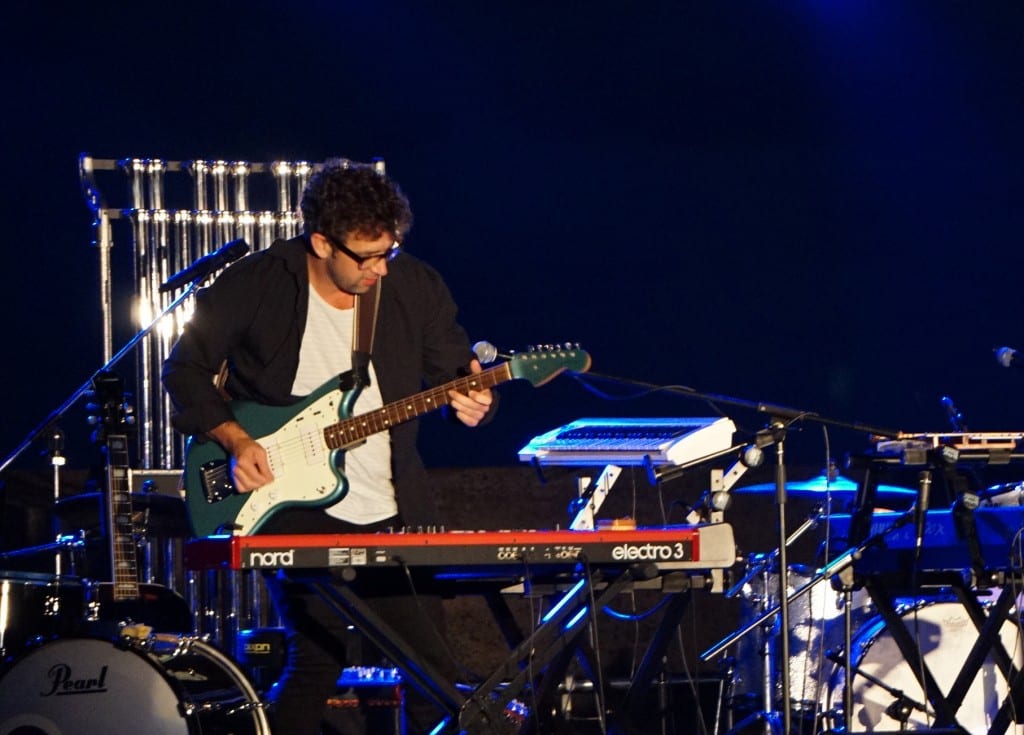



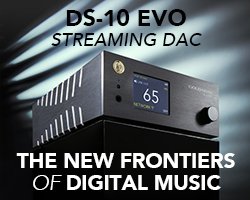









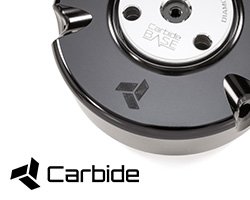





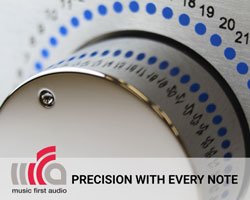
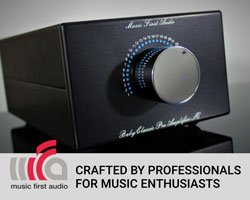




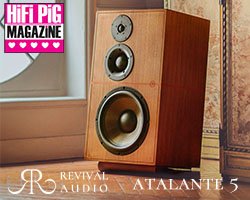























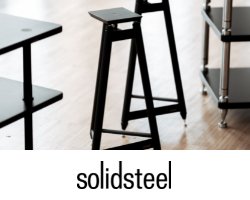




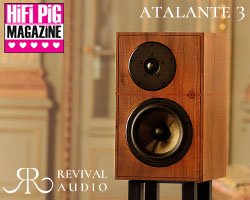

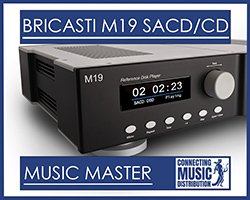
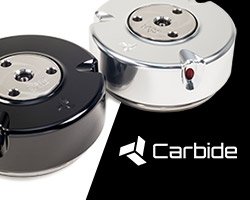

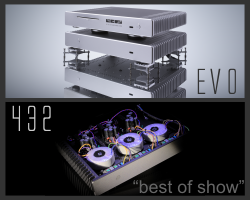
























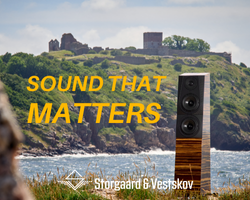
















































You must be logged in to leave a reply.